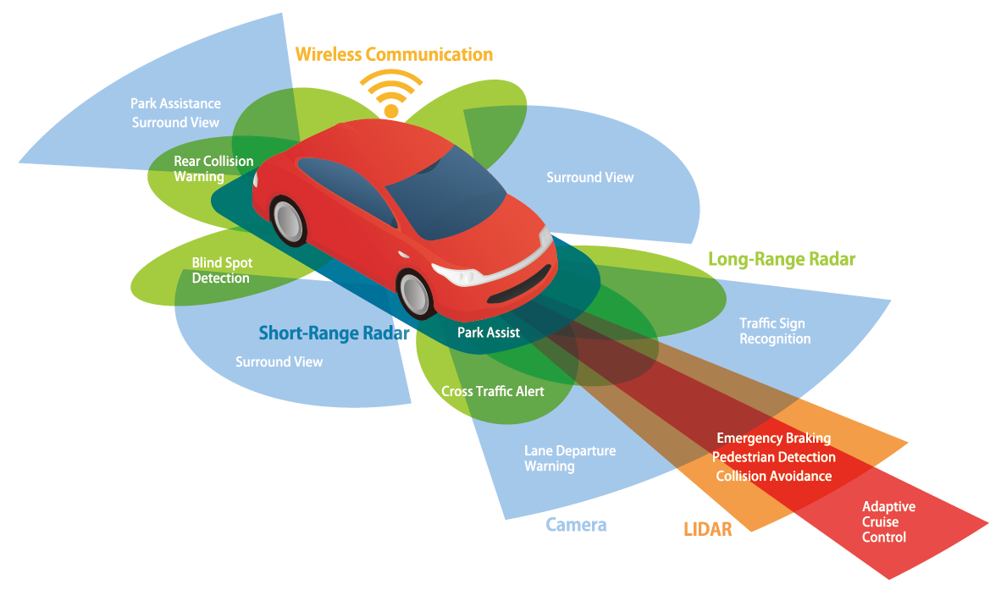
How do self-driving cars navigate roads and traffic?
In the UK, trials of self-driving vehicles have been taking place since 2015 in Bristol, Coventry, Greenwich, and Milton Keynes, with British companies Wayve and Oxa spearheading significant breakthroughs in the technology.
Autonomous vehicles are currently not allowed to drive unsupervised on UK roads, with a human expected to remain in control of the car at all times. The Automated Vehicles Act became law in May 2024 and outlined the safety standards and procedures for autonomous vehicles. In June 2025, the government announced that businesses will be able to pilot small-scale ‘taxi- and bus-like’ services without a human safety driver for the first time from spring 2026, bringing this futuristic vision closer to everyday reality on England’s roads.
Autonomous vehicles are currently not allowed to drive unsupervised on UK roads, with a human expected to remain in control of the car at all times.
So, how do autonomous vehicles navigate their environment? The vehicles use numerous sensors to ‘see’ where they are going and detect potential hazards around the vehicle. These can include cameras, which identify traffic lights, road markings, pedestrians, and other vehicles; radar to measure the speed and distance of nearby objects; and LiDAR (light detection and ranging), which creates a 3D map of the surroundings using laser light. AI algorithms then process data from the sensors to make real-time decisions. This includes recognising objects, predicting the behaviour of other road users and determining the safest path forward. The vehicle’s computer-powered control system then translates AI decisions into actions, such as steering, braking and accelerating. Some vehicles also refer to high-definition maps and GPS to help determine their exact location and plan routes.
The combination of these technologies allows autonomous vehicles to operate with minimal or no human intervention, depending on their level of autonomy. There are six levels of automation for driverless cars. For example, Level 0 means the vehicle has no autonomous features; Level 2, which currently covers cars that are allowed to legally drive on UK roads, is where the car can take over some aspects of driving, such as automatic emergency braking, adaptive cruise control, and parking assist; and Level 5 means complete autonomy with no input from a human.

A combination of technologies such as radar, cameras and LiDAR enable autonomous vehicles to navigate their route © Shutterstock
A significant benefit could be improved safety on the roads. Despite some technology failures during commercial driverless taxi pilots, statistically, autonomous vehicles remain safer than those with humans behind the wheel – they don’t get distracted and they stick rigidly to the rules of the road and speed limits. They may also increase efficiency by communicating with other autonomous vehicles to optimise routes and avoid traffic congestion.
The technology still has some catching up to do with human drivers in some situations, such as in poor weather conditions, complex traffic scenarios and in the face of unpredictable behaviour from pedestrians, other road users, and even passing animals. Legislation too, is needed to address liability, but as the technology improves and regulations adapt, we may soon see a future where cars drive themselves.
Get a free monthly dose of engineering innovation in your inbox
SubscribeRelated content
Transport

The ‘flat-pack’ footbridge for train stations
If you thought flat-pack was just for furniture, think again! Find out how this new concept can make building a humble railway bridge take less time, money and carbon.

Electrifying trains and STEMAZING outreach
Alex Keeler, a railway overhead line design engineer at Amey, won this year’s Baroness Platt of Writtle Award for the most outstanding incorporated engineering application nationwide.

The entrepreneur solving engineering problems with data
Elspeth Finch MBE FREng started her first company in her 20s and is now heading up her second, which is using data to transform supply chain relationships.

How crashing cars can help us make them safer
When your day job sometimes involves totalling a £100k car in the name of keeping passengers safe.
Other content from Ingenia
Quick read

- Environment & sustainability
- Opinion
A young engineer’s perspective on the good, the bad and the ugly of COP27

- Environment & sustainability
- Issue 95
How do we pay for net zero technologies?
Quick read

- Transport
- Mechanical
- How I got here
Electrifying trains and STEMAZING outreach

- Civil & structural
- Environment & sustainability
- Issue 95